- Vinyl-Records>
- Blues Music History
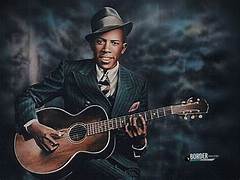
The Blues Music History.
Welcome!
If you’ve ever felt a guitar note bend like a sigh or heard a voice carry a whole life in one line, you’ve brushed up against the blues. This story traces the History of American Blues from its earliest roots to its global travels and triumphant return via the British scene. It’s relaxed and conversational here, but we’re serious about accuracy—so settle in for an engaging journey through the people, places, and sounds that shaped modern music.
The blues began as an expression of African American life in the post–Civil War South. It grew from work songs, field hollers, spirituals, and ring shouts—music built on call-and-response, flexible rhythm, and the “blue” notes that tug at the heart. These were practical songs for hard days and long nights, functional and communal before they were ever commercial. In that setting, the blues was both survival and storytelling.
By the late 19th century, sharecropping, Jim Crow laws, and racial violence defined daily reality for many Black Southerners. Musicians sang about wandering, railroads, levees, bosses, lost love, and the hope of something better up the road. Juke joints on plantation edges and rural dance halls became laboratories for new sounds, where a lone voice and a guitar could fill the room with feeling. The music’s intimacy matched the intimacy of the stories.
Musically, the 12-bar blues form became a common framework, with its I–IV–V (the chord sequence, 1-4-5, eg E, A, B) though early blues was far more fluid. Singers stretched bars, slid between notes, and played with time. Instruments were whatever was available: guitars, fiddles, harmonicas, homemade percussion. Slide guitar—using a bottleneck or metal tube—gave the music its keening, vocal-like cry.
W.C. Handy Kicks Things Off
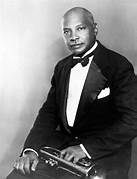 W.C.Handy, the writer of the classic St Louis Blues.
W.C.Handy, the writer of the classic St Louis Blues.One of the first people to notate and popularize the sound for wider audiences was W.C. Handy, a bandleader and composer who encountered blues musicians in Mississippi. His “Memphis Blues” (1912) and “St. Louis Blues” (1914) weren’t field hollers; they were sophisticated compositions that borrowed the spirit, scale, and feel of rural music for urban stages. Handy called himself the “Father of the Blues,” and while the title is debated, his role in broadcasting the idiom is undeniable. He helped lift the blues from local tradition to national consciousness.
Mamie Smith and the Female Blues
The first big commercial breakthrough came with Mamie Smith’s “Crazy Blues” in 1920, which launched the “race records” market. The classic female blues era followed: Ma Rainey, Bessie Smith, and Ida Cox toured the TOBA vaudeville circuit, fronting bands and packing theatres. Their songs told of love, betrayal, and independence, often with sly humour and fierce resolve. These stars proved the blues could headline.
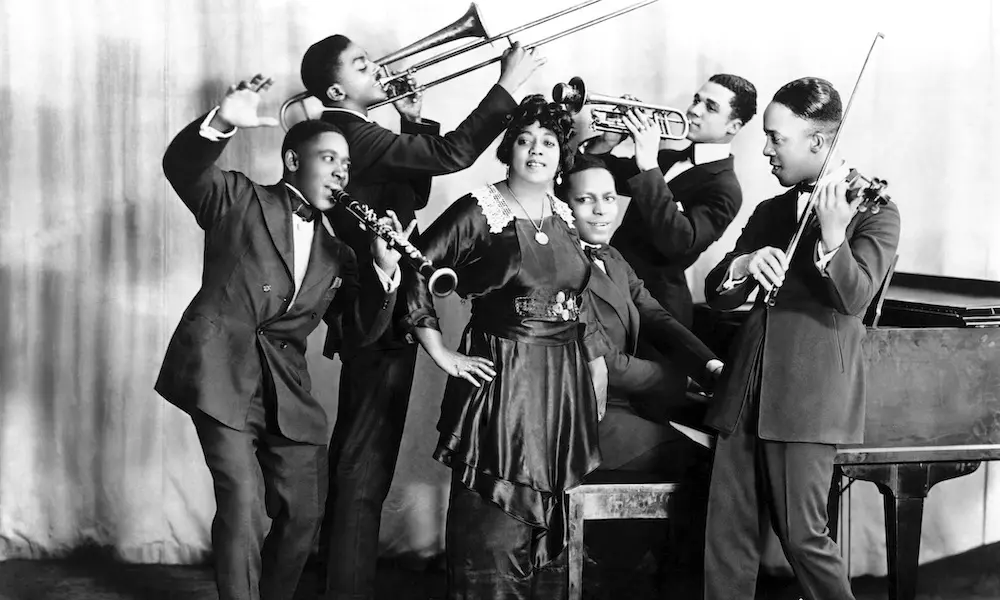 Mamie Smith and her Jazz Hounds, her Crazy Blues recording started the classic female blues era.
Mamie Smith and her Jazz Hounds, her Crazy Blues recording started the classic female blues era.Out in the rural South, record scouts set up temporary studios, capturing rawer country blues voices. Mississippi’s Delta blues centered around figures like Charley Patton, Son House, Skip James, Tommy Johnson, and the mythic Robert Johnson, whose 1936–37 recordings reshaped guitar vocabulary. In the hill country, Mississippi Fred McDowell developed a hypnotic, droning style. On the gentle end, Mississippi John Hurt picked ragtime-inflected guitar with a soft, lilting voice.
Texas and the Southeast had their own flavours. Blind Lemon Jefferson, a street musician from Texas, became a major star in the 1920s with incisive guitar lines and piercing vocals. Blind Willie Johnson fused sacred texts with ferocious slide. In the Carolinas and Georgia, the Piedmont style—Blind Blake, Reverend Gary Davis, and later Brownie McGhee—used nimble, syncopated fingerpicking borrowed from ragtime and dance music.
The Great Migration transformed the blues. Millions of African Americans left the rural South for the industrial Midwest and North—Memphis, St. Louis, Detroit, and Chicago. In cities, solo acoustic guitar gave way to bands and backlines. The blues adapted to crowded clubs, amplifying its sound without losing its voice.
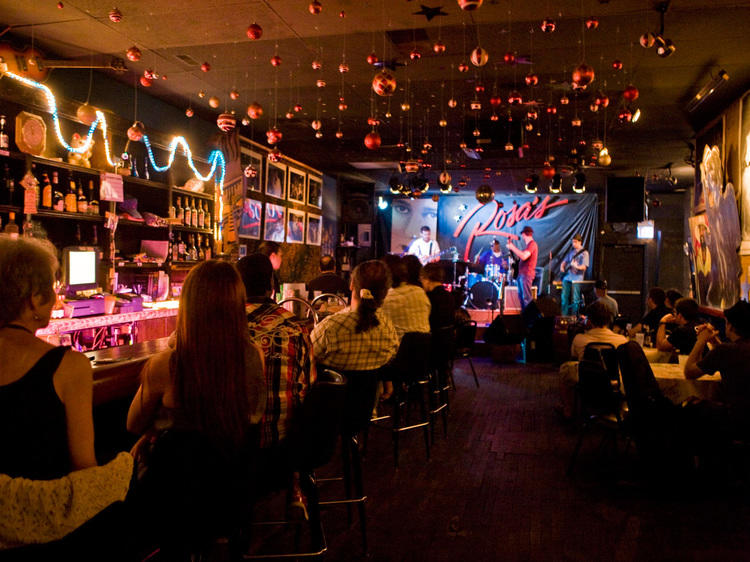 Typical night of Blues Music, Chicago.
Typical night of Blues Music, Chicago.Texas and the Mid West Get Into the Blues
Texas and the Southeast had their own flavours. Blind Lemon Jefferson, a street musician from Texas, became a major star in the 1920s with incisive guitar lines and piercing vocals. Blind Willie Johnson fused sacred texts with ferocious slide. In the Carolinas and Georgia, the Piedmont style—Blind Blake, Reverend Gary Davis, and later Brownie McGhee—used nimble, syncopated fingerpicking borrowed from ragtime and dance music.
The Great Migration transformed the blues. Millions of African Americans left the rural South for the industrial Midwest and North—Memphis, St. Louis, Detroit, and Chicago. In cities, solo acoustic guitar gave way to bands and backlines. The blues adapted to crowded clubs, amplifying its sound without losing its voice.
The 1930s brought economic collapse, but the music persisted through artists like Big Bill Broonzy, Tampa Red, Lonnie Johnson, and Memphis Minnie (who wrote “When the Levee Breaks”). Swing and jump blues—Louis Jordan chief among them—streamlined the beat and pointed toward rhythm and blues. If you’re tracing the History of American Blues, this is a hinge moment: rural forms meeting urban modernity, dancing into the future.
Electrification changed everything. In the 1940s, T-Bone Walker showcased the electric guitar as a lead instrument, with horn-like phrasing and smooth sophistication. Small combos became the norm, and wartime economics favored tighter bands with bigger punch. Amplifiers gave guitars and harmonicas the muscle to cut through a room.
Chicago, home to Chess Records, became the epicenter of postwar electric blues. Muddy Waters arrived from Mississippi and built a band sound that roared—Little Walter reinvented amplified harmonica, Jimmy Rogers added supple guitar, Otis Spann colored everything with piano. Howlin’ Wolf brought thunder; Willie Dixon wrote future standards like “Hoochie Coochie Man,” “Spoonful,” and “Little Red Rooster.” Add Elmore James’s blazing slide and Buddy Guy’s fire, and you have a canon.
Other cities added hues to the palette. On the West Coast, T-Bone Walker and Pee Wee Crayton married blues to jazz sophistication. In Texas, Clarence “Gatemouth” Brown and later Albert Collins carved icy, stinging tones. Detroit’s John Lee Hooker stamped out earthy boogies like “Boogie Chillen,” while New Orleans guitarists such as Guitar Slim (“The Things That I Used to Do”) bent the blues toward R&B funkiness. Memphis’s Beale Street nurtured B.B. King, who refined single-note vibrato and sang from the soul.
What Was the Blues All About?
What were singers singing about? Everything real:
heartbreak, migration, money troubles, work, faith, humor, sex, pride, and
protest—sometimes coded to slip past censors and club owners. Why did it take
so long to be widely heard? Racism and segregation walled off venues and radio,
major labels ignored Black markets until profits were undeniable, and rural
music often stayed local by necessity. Exploitative contracts and limited
distribution meant many masters never traveled far. The blues was a giant voice
in a small room.
Field recordists like John and Alan Lomax preserved crucial
strands, documenting work songs, prison songs, and early blues for the Library
of Congress. They recorded Muddy Waters on Stovall Plantation in 1941–42 and
helped introduce Lead Belly and others to broader audiences. The late-1950s and
early-1960s folk revival rediscovered older artists—Mississippi John Hurt, Son
House, Skip James, and Reverend Gary Davis—placing them on college stages and
at the Newport Folk Festival. A new, largely white audience leaned in to
listen.
Meanwhile, blues language seeded rock ’n’ roll. Chuck Berry
turned blues licks into poetry about cars and teenagers, Bo Diddley cracked a
beat that launched a thousand bands, and Little Richard, Fats Domino, and
others turned jump blues into piano-pounding joy. Elvis Presley’s early catalog
pulled from blues and R&B sources. The 12-bar structure and guitar
vocabulary powered the new music’s engine.
In the mid-1960s, American bands started plugging back into
Chicago and Delta traditions. The Paul Butterfield Blues Band fused South Side
muscle with young virtuosity—Mike Bloomfield’s electric guitar heroics meeting
Sam Lay’s drums and Jerome Arnold’s bass. Canned Heat championed boogie and
hill country grooves, while Bloomfield later brought electric blues to Bob
Dylan’s and Al Kooper’s projects. These groups helped bridge blues and the
burgeoning rock audience.
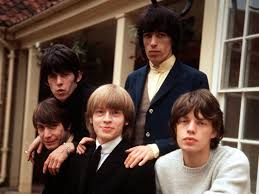 Rolling Stones Rolling Stones |
 John Mayall John Mayall |
 Alexis Korner. Alexis Korner. |
 Long John Baldry. Long John Baldry. |
The Blues Reaches Across the Atlantic
Across the Atlantic, a different story unfolded. Postwar Britain had rationing and few homegrown records, but seamen and British sailors brought American 78s into Liverpool and London—R&B, jazz, and blues that were otherwise unavailable. American GIs and specialty shops like Dobell’s fed the appetite. Skiffle, led by Lonnie Donegan, turned Lead Belly and other American folk-blues into a youth craze, teaching a generation to strum.
The British blues scene coalesced in London clubs. Chris Barber’s band backed Big Bill Broonzy and later brought Muddy Waters to the UK in 1958, shocking and inspiring audiences with electric Chicago blues. Alexis Korner and Cyril Davies formed Blues Incorporated with Alexis Korner, a workshop where Mick Jagger, Keith Richards, Brian Jones, Jack Bruce, Charlie Watts, and Ginger Baker all passed through. John Mayall’s Bluesbreakers became a finishing school for future stars, and leading to the British Blues Invasion.
Guitarists studied the masters with monastic focus. Eric Clapton absorbed B.B., Freddie, and Albert King; Jeff Beck mixed stinging attack with sonic adventure; Jimmy Page fused blues with orchestral imagination; Peter Green distilled aching lyricism. They didn’t invent the form—they revered and reinterpreted it, often crediting their American teachers. Their records made space for extended solos, heavy grooves, and slow blues as a dramatic centerpiece.
Then the music boomeranged back to its birthplace. The Rolling Stones recorded at Chess in 1964 and brought Willie Dixon’s and Muddy Waters’s catalogs into the mainstream; their “Little Red Rooster” even hit number one in the UK. The Yardbirds, The Animals, Cream, Fleetwood Mac (the Peter Green era), and others toured America, reintroducing the blues to young listeners who sometimes didn’t yet know the originals. In the History of American Blues, this “British Invasion” served as a megaphone pointed back at the source.
Another crucial bridge was the American Folk Blues Festival, organized by German promoters Horst Lippmann and Fritz Rau starting in 1962. It brought Muddy Waters, Howlin’ Wolf, Sonny Boy Williamson II, T-Bone Walker, and many more to European stages, where they were treated like royalty. Those tours revived careers, inspired the British scene, and generated recordings and films that later circulated in the United States. International respect nudged American media to pay attention.
The ripple effects in the U.S. were big. Blues artists found new audiences at integrated venues, on the college circuit, and at festivals—Ann Arbor Blues Festival (1969) became a landmark. Reissue programs shone light on forgotten masters, and cross-genre bills at the Fillmore put B.B. King next to rock bands, widening ears. Jimi Hendrix, deeply rooted in blues phrasing and attitude, exploded the palette for guitarists worldwide.
Influence of the Blues
The blues influenced more than rock. Soul and funk drew
their emotional directness and church-meets-juke phrasing from blues singers;
country music absorbed its storytelling and twang; jazz soloists mined its
vocabulary; hip-hop producers sampled its grooves and grit. Even pop ballads
that chase heartbreak do so along paths the blues paved. It’s the emotional
baseline of American music.
Who were the Original Blues Singers, and what shaped them?
Many came from the rural South, grew up in church, learned on cheap guitars,
and wrote from firsthand experience with poverty, discrimination, and hard
travel—Ma Rainey and Bessie Smith commanding vaudeville stages; Charley Patton
roaring from Dockery Farms; Robert Johnson refining Delta technique into myth;
Big Bill Broonzy bridging eras; Memphis Minnie writing with tough wit; Muddy
Waters and Howlin’ Wolf electrifying the city. These Americanl Blues singers
influenced every guitarist and vocalist who followed, from B.B. King and Etta
James to Eric Clapton and Aretha Franklin. Listeners still ask: “Who were the
original American Blues singers, what was their background, and what bwas their
influence on the Amercan and world music?” The answer is: they were innovators
whose personal histories became a global language.
Today the tradition thrives and evolves. Museums and
organizations—the Delta Blues Museum, the Blues Foundation and Blues Hall of
Fame in Memphis—preserve history while festivals keep stages alive. Artists
like Bonnie Raitt, Taj Mahal, Keb’ Mo’, Christone “Kingfish” Ingram, Gary Clark
Jr., Shemekia Copeland, and Samantha Fish carry the torch, blending classic
feeling with modern sound. The blues keeps adapting because it starts with
lived truth.
The arc is clear: born from the Black experience in the
American South, the blues traveled to cities, electrified, seeded countless
genres, sailed to Britain, and came roaring back home with a bigger audience
than ever. That, in short, is the History of American Blues—an American story
with worldwide resonance. If this sparked your curiosity, listen to Bessie
Smith’s “Backwater Blues,” Robert Johnson’s “Cross Road Blues,” Muddy Waters’s
“I’m Your Hoochie Coochie Man,” Howlin’ Wolf’s “Smokestack Lightnin’,” and B.B.
King’s “The Thrill Is Gone.” You’ll hear yesterday, today, and tomorrow in
every note.
Enjoy this site? Share with friends!
